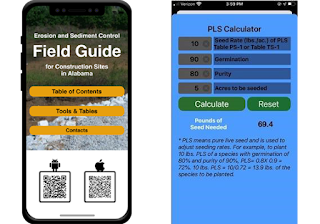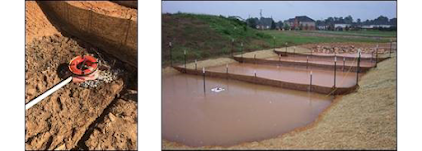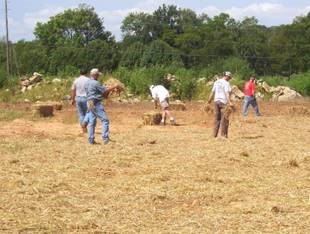Today’s Erosion and Sediment Control Tip: #17

Today’s Erosion and Sediment Control Tip Most of you now should have heard that the Alabama Field Guide for Erosion and Sediment Control (The Pocket Guide) is now available as an App in both Apple and Android versions. The Apps make it easy to navigate, the tables are interactive, and the best part to me is the Pure Live Seed Calculator. Seeding recommendations are always made for Pure Live Seed in pounds or bushels per acre. If you know the percent germination and percent purity off the seed tag, the Calculator does all the work for you to determine exactly how much seed is needed for your acreage to obtain the Pure Live Seed recommendation. Try it out. FYI - Clear Water Alabama will be near the Gulf Coast next year. Be on the lookout for a “Save The Date” after the first of the year. Perry L. Oakes, PE Erosion & Sediment Control Program Coordinator




